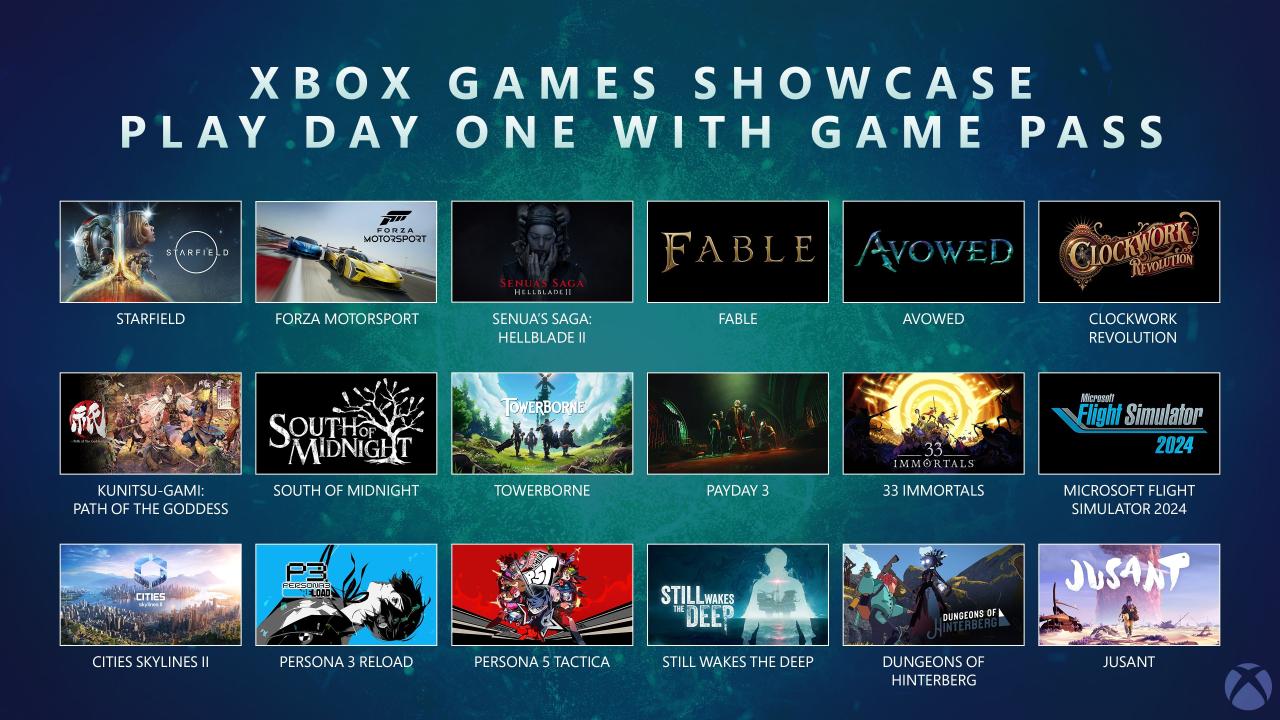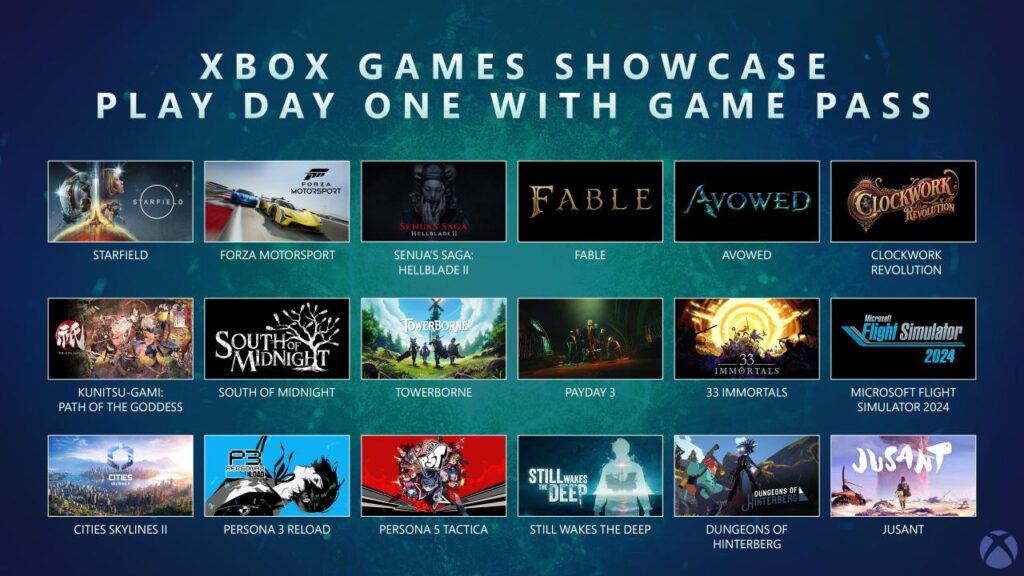Game cacing captures the essence of gaming culture, weaving together history, mechanics, and community. This fascinating genre has evolved from humble beginnings to a vibrant part of the gaming landscape, gaining popularity and fostering connections among players. The journey of game cacing reflects not just individual skill but also the shared experiences that shape gaming communities.
From its origins to the present day, game cacing has seen significant developments in gameplay mechanics and formats, attracting enthusiasts with its unique challenges. With its engaging rules and objectives, players embark on thrilling adventures, competing in various formats that keep the gameplay fresh and exciting. As the genre continues to grow, its impact on gaming culture and its community-building potential become increasingly evident.
Introduction to Game Cacing
Game cacing, a term that resonates profoundly within the gaming culture, involves the practice of players intensely engaging in a game, often to the point of obsession. It is not merely a playstyle but a cultural phenomenon that reflects the passion and dedication of gamers worldwide. Game cacing encompasses various elements of gameplay, such as grinding for rewards, mastering game mechanics, and forming communities around shared experiences.
The history of game cacing can be traced back to the early days of gaming when players spent countless hours on arcade machines, striving for high scores and bragging rights. As gaming evolved with the advent of home consoles and the internet, so did the concept of cacing. With games becoming more complex and immersive, players began to dedicate significant time to mastering them, leading to an explosion of dedicated communities. This evolution has seen game cacing transform from a solitary pursuit to a collaborative effort, where players share strategies, tips, and achievements on forums and social media platforms.
Popularity and Impact on Gaming Communities
The popularity of game cacing has grown exponentially, influencing both player behavior and community dynamics. Players find camaraderie in shared experiences, often forming tight-knit groups that support one another in their gaming journeys. This phenomenon has real implications for gaming communities, fostering a sense of belonging among players.
The impact of game cacing can be categorized into several key areas:
- Community Building: Game cacing encourages the formation of communities that unite players around common interests, leading to the creation of forums, Discord servers, and social media groups dedicated to specific games.
- Increased Content Creation: The obsession with mastering games has given rise to a plethora of content creators, including streamers, YouTubers, and bloggers, who share gameplay tips, walkthroughs, and entertainment, further enhancing community engagement.
- Competitive Scenes: The dedication of cacing players has led to the rise of competitive gaming, or esports, where players can compete at high levels, often for significant prizes. This has transformed casual gaming into a professional pursuit.
- In-Game Economies: Game cacing has also influenced in-game economies, particularly in multiplayer online games, where players engage in trading and crafting items, often creating a market driven by player demand and engagement.
“Game cacing is not just about playing; it’s about dedication, community, and the shared journey toward mastery.”
Game Cacing Mechanics

Game Cacing boasts a unique set of mechanics that define its gameplay and player interaction. By understanding the core rules and objectives inherent in various formats, players can fully immerse themselves in the dynamic world of this engaging game. This segment explores the fundamental mechanics that shape Game Cacing, detailing how they influence gameplay across different variants.
Core Mechanics of Game Cacing
At the heart of Game Cacing lies a blend of strategic planning, dexterity, and competitive spirit. Players often control a “snake” or similar entity that grows as it collects resources or navigates through a game environment. Core mechanics include movement controls, resource collection, and collision avoidance, which create a thrilling experience.
– Movement Controls: Players navigate their characters using simple directional inputs, making quick decisions crucial to progression.
– Resource Collection: Gathering items or points enables players to grow their snake’s length and score, offering a competitive edge.
– Collision Avoidance: Players must tactically avoid obstacles and other players to prevent game elimination, fostering a sense of urgency.
“The interplay of strategy and reflexes makes Game Cacing a compelling challenge.”
Rules and Objectives of Game Cacing Formats
Different Game Cacing formats may have unique rules and objectives; however, they share common elements that dictate gameplay. Understanding these guidelines is essential for any player aiming for success.
– Objective: The primary goal is to grow the snake as long as possible while surviving against competitors and environmental hazards.
– Starting Conditions: Players begin with a small snake or avatar and must immediately start collecting resources to expand.
– Winning Conditions: The game typically ends when a player reaches a predetermined length, or when only one player remains after others have been eliminated.
Popular Game Cacing Variants
Game Cacing has evolved into various popular formats, each with unique twists and mechanics that appeal to different audiences. Below are some notable variants that have gained significant traction:
1. Classic Snake: The quintessential version where players navigate a simple grid, avoiding walls and their own tail while collecting food items.
2. Slither.io: An online multiplayer variant that allows players to grow by consuming glowing orbs left by defeated snakes, adding an element of competition with real-time players.
3. Worms Zone: This mobile game incorporates power-ups and special abilities, enriching the gameplay experience while maintaining the core mechanics of resource collection and survival.
4. Little Big Snake: This variant combines RPG elements, allowing players to level up their characters and unlock new skills, providing depth to the traditional mechanics.
Each of these variants showcases the flexibility of Game Cacing mechanics, appealing to both casual gamers and competitive players. The blend of growth, strategy, and player interaction creates a rich gaming environment that keeps players engaged and coming back for more.
Strategies for Game Cacing
In the competitive landscape of game cacing, players must equip themselves with a repertoire of strategies that can enhance their chances of winning. Understanding and employing these strategies not only boosts performance but also enriches the overall gaming experience. This section delves into the essential strategies, advanced techniques, and common pitfalls to avoid, ensuring that players are well-prepared for every challenge they face.
Effective Strategies for Winning in Game Cacing
Mastering game cacing requires adaptive strategies tailored to the unique dynamics of each session. Key strategies include:
- Resource Management: Efficient use of resources like energy and time can significantly influence gameplay. Prioritize upgrades that yield immediate benefits.
- Positioning: Positioning your game piece optimally can give you a tactical advantage, allowing for better navigation and evasion.
- Anticipation of Opponent Moves: Reading your opponents and predicting their actions is crucial. Observing their patterns and adapting your strategy accordingly can lead to successful maneuvers.
Advanced Techniques for Experienced Players
For seasoned players looking to elevate their gameplay, advanced techniques can provide the edge needed to distinguish themselves from their peers. These techniques include:
- Combination Moves: Mastering the art of combining moves can create powerful effects that maximize outcomes. Learning the timing and sequencing of these moves is essential.
- Use of Deception: Employing tactics that mislead opponents, such as feigned moves or sudden changes in strategy, can disrupt their plans and create opportunities for you.
- Game Theory Application: Applying principles of game theory to anticipate and counteract opponent strategies can sharpen decision-making processes significantly.
Common Mistakes and How to Avoid Them
Recognizing and mitigating common mistakes is vital for growth in game cacing. Many players fall into similar traps that can be easily avoided. Key mistakes include:
- Neglecting to Adapt: Sticking rigidly to one strategy can lead to failure. Flexibility in approach ensures responsiveness to changing game dynamics.
- Underestimating Opponents: Disregarding the potential of opponents can result in unexpected losses. Always account for their capabilities and adjust accordingly.
- Panic Moves: Making hasty decisions under pressure can often end in disaster. Taking a moment to assess the situation before acting can lead to better outcomes.
The Cultural Impact of Game Cacing

Game cacing, a gaming phenomenon that combines elements of strategy and community interaction, has left a significant imprint on contemporary culture. This impact extends beyond mere gameplay mechanics, influencing social interactions and the broader entertainment landscape. As players engage not only with the game but also with each other, the cultural ramifications of game cacing are becoming increasingly evident.
Game cacing fosters a unique social environment, creating communities that transcend geographical boundaries. Players frequently form groups, guilds, or clans, which provide a sense of belonging and camaraderie. The interaction within these communities often leads to the development of friendships and collaborative strategies that enhance the gaming experience. For example, platforms like Discord have become essential tools for communication among cacing enthusiasts, allowing for real-time discussions, strategy sharing, and socializing. The social aspect of game cacing promotes inclusivity and encourages players to forge connections that may not be possible in other gaming genres.
Community-Building Effects of Game Cacing
The community aspect of game cacing plays a crucial role in its cultural significance. Players often gather to share their experiences, strategies, and challenges, reinforcing their social bonds. This interaction fosters a supportive environment where novice players can learn from seasoned veterans.
Key elements of community-building in game cacing include:
- Collaboration: Players often work together to achieve in-game objectives, fostering teamwork and collaboration.
- Shared Objectives: Many players unite under common goals, such as competing in tournaments or completing challenges, enhancing the sense of purpose within the community.
- Event Participation: In-game events and real-world meetups, such as conventions or esports tournaments, strengthen community ties and allow players to engage in shared experiences.
The communal spirit of game cacing can be seen in various online forums and social media groups dedicated to discussing tips, showcasing achievements, and hosting competitive events.
Influence on Popular Media and Entertainment, Game cacing
The rise of game cacing has not only shaped its immediate community but also left a mark on popular media and entertainment. Many game cacing themes and mechanics have been integrated into television shows, films, and literature, reflecting its growing popularity.
Notable influences include:
- Streaming Platforms: The rise of platforms like Twitch has propelled game cacing into the spotlight, with many players gaining fame through live-streamed gameplay.
- Esports: Competitive game cacing events have led to the establishment of esports leagues, drawing significant audiences and sponsorships, akin to traditional sports.
- Merchandising: The popularity of game cacing has resulted in merchandise, artwork, and collectibles, further embedding it into mainstream culture.
These elements highlight the transformative impact of game cacing on entertainment, showcasing how it has become a cultural touchstone that resonates with a wide audience.
Comparison with Other Gaming Genres
Game cacing distinguishes itself from other gaming genres through its unique blend of strategy, social interaction, and community engagement. Unlike traditional single-player games that focus primarily on personal achievement, game cacing emphasizes collaboration and shared experiences among players.
Key differences include:
- Interactivity: Game cacing encourages ongoing interaction between players, whereas many other genres may prioritize solitary gameplay.
- Community Focus: The social aspect is central to game cacing, while in genres like first-person shooters or role-playing games, social interaction may be secondary.
- Dynamic Gameplay: Game cacing often involves changing strategies based on real-time player interactions, contrasting with fixed narratives seen in other genres.
The distinct focus on community and collaborative gameplay in game cacing sets it apart, demonstrating its unique contribution to the broader gaming culture.
Technology in Game Cacing
The landscape of game cacing has been significantly shaped by technological advancements, which have enhanced the experience for players and developers alike. As gaming evolved, so did the tools and platforms that support it, making game cacing not only more accessible but also more immersive. The integration of cutting-edge technology has transformed game cacing from a simple pastime into a complex cultural phenomenon that connects people across the globe.
Influence of Technological Advancements
The impact of technology on game cacing has been profound, with several key advancements driving its growth. High-speed internet has enabled seamless online play, allowing players to connect and compete in real time, regardless of geographical barriers. Additionally, the rise of mobile gaming has made game cacing more accessible, as players can engage in competitions on-the-go.
Key technological influences include:
- Cloud Gaming: Services like Google Stadia and NVIDIA GeForce NOW allow players to stream games without needing powerful hardware, democratizing access to high-quality gaming experiences.
- Augmented Reality (AR) and Virtual Reality (VR): These technologies create immersive environments where players can engage in game cacing with an unprecedented level of realism and interaction, enhancing engagement and competition.
- Artificial Intelligence (AI): AI is used to create more challenging opponents and personalized gaming experiences, tailoring gameplay to individual skill levels and preferences.
Future of Game Cacing with Emerging Technologies
Looking ahead, the future of game cacing is poised for exciting developments driven by emerging technologies. Innovations such as blockchain and NFTs are starting to make their mark, bringing unique digital assets into the gaming ecosystem. Players can own, trade, and sell in-game items, which adds a new layer of value and engagement.
Additionally, advancements in 5G technology are expected to revolutionize mobile gaming, enabling faster loading times and smoother gameplay, which is crucial for competitive environments. This will allow for more dynamic game scenarios and real-time collaboration among players.
Emerging technologies to watch include:
- Blockchain Technology: Its potential for creating secure, transparent ownership of digital assets will reshape in-game economies and player interactions.
- Advanced AI: Future AI developments could lead to the creation of adaptive gaming environments that respond to player behavior, making each gaming experience unique.
- Mixed Reality (MR): This technology combines AR and VR, allowing players to experience game cacing in ways that merge the digital and physical worlds, enhancing interactivity.
Role of Online Platforms in Expanding Reach
Online platforms have played a critical role in the expansion of game cacing, providing accessible environments for players to engage and compete. Platforms such as Twitch and YouTube Gaming have created communities where players can showcase their skills, learn from others, and participate in live-streamed events, significantly increasing the visibility of game cacing.
The importance of these platforms includes:
- Community Building: Players can connect with like-minded individuals, fostering a sense of belonging and shared passion for game cacing.
- Content Creation: Streamers and content creators produce tutorials, commentary, and live competitions, enriching the gaming culture and providing valuable resources for players.
- Event Hosting: Online platforms are increasingly hosting tournaments and events, allowing players from different regions to compete for recognition and prizes, enhancing the competitive aspect of game cacing.
“The convergence of technology and game cacing is creating possibilities that were once unimaginable, paving the way for a new era of interactive entertainment.”
Game Cacing Events and Competitions
Game cacing has evolved from a casual pastime into a vibrant competitive scene, with numerous events and tournaments that draw players and spectators alike. These competitions are not merely a showcase of skill, but rather a celebration of community, strategy, and the ever-growing popularity of the game. With a variety of formats and event styles, game cacing competitions offer both players and teams a chance to demonstrate their expertise on a global stage.
Major Game Cacing Tournaments and Formats
The landscape of game cacing is dotted with several prominent tournaments that define the competitive calendar. These events vary in format, attracting players from all corners of the globe and providing thrilling experiences for fans.
- The Cacing Championship Series (CCS): This annual tournament is known for its rigorous format, featuring both single-elimination and round-robin stages. With a grand prize pool that often exceeds hundreds of thousands, the CCS has become a pinnacle for aspiring cacing players.
- Global Cacing League (GCL): This league conducts a series of monthly competitions culminating in a climactic championship. Teams earn points based on performance, leading to a dramatic showdown at the end of the season.
- Community Cacing Cup: A grassroots initiative that allows local players to compete in a friendly yet competitive environment. Often organized by community members, these cups foster camaraderie and enable newer players to gain experience.
Notable Players and Teams in the Game Cacing Scene
The game cacing scene is rich with talent, boasting players and teams that have made their mark through exceptional skill and strategic gameplay. These individuals and groups have become icons within the community, inspiring countless others to pursue the game.
- Player X: Renowned for their strategic foresight and ability to read opponents, Player X has clinched multiple titles in the CCS, setting a standard for excellence.
- Team Cacing Warriors: A powerhouse in the GCL, this team is celebrated for their cohesive gameplay and innovative strategies that have earned them a dedicated fanbase.
- Player Y: Known for their unorthodox techniques, Player Y has garnered attention during community cups, proving that creativity can lead to unexpected victories.
Community-Driven Events Promoting Game Cacing
Community-driven events play a crucial role in the broader game cacing ecosystem. These gatherings not only promote competitive play but also serve as a platform for players to connect and share their passion for the game.
- Local Tournaments: Often organized by gaming clubs or local enthusiasts, these tournaments allow players to participate in a more intimate setting, fostering community spirit.
- Charity Events: Several game cacing competitions are held for charitable causes, demonstrating the community’s commitment to giving back while enjoying the game.
- Online Leagues: With the rise of digital platforms, many players engage in online leagues that bring together enthusiasts from various regions, enhancing accessibility and participation in the game.
Educational Benefits of Game Cacing
Game cacing, often recognized for its entertainment value, also offers a multitude of educational benefits. By engaging players in strategic thinking and problem-solving, it enhances cognitive skills that are essential in both academic and real-world scenarios. The intersection of fun and learning creates an environment where participants can develop various competencies while enjoying the game.
Game cacing encourages several cognitive skills, such as critical thinking, decision-making, and teamwork. These skills are not only crucial in gaming but also translate effectively into educational settings and professional environments. Through game cacing, players experience complex scenarios that require them to analyze information, predict outcomes, and devise appropriate strategies.
Cognitive Skills Enhanced by Game Cacing
The cognitive skills that are enhanced through game cacing can be categorized into several key areas:
- Critical Thinking: Players are often faced with challenges that require them to evaluate different options and make informed decisions.
- Problem-Solving: Navigating through obstacles in the game fosters a mindset focused on finding effective solutions to varied problems.
- Strategic Planning: Developing long-term strategies for success teaches players to think ahead and consider the consequences of their actions.
- Collaboration: Many games promote teamwork, helping players to learn to communicate effectively and work towards common goals.
Examples of Game Cacing in Educational Settings
Incorporating game cacing into educational environments has proven to be an effective strategy for enhancing engagement and learning outcomes. Various institutions have adopted this approach:
- Classroom Enrichment: Teachers use game cacing to teach subjects such as mathematics and science, allowing students to apply theoretical concepts in a practical context.
- After-School Programs: Many after-school clubs focus on game cacing, where students develop social skills, critical thinking, and leadership abilities.
- Online Learning Platforms: Platforms like Kahoot and Quizizz incorporate game mechanics to make learning interactive and fun, reinforcing knowledge retention.
Potential for Learning Through Game Cacing Practices
The potential for learning through game cacing practices extends beyond traditional educational settings. It offers a unique platform for experiential learning, where players can:
- Gain Real-Life Skills: Skills developed in game cacing, such as negotiation and resource management, are applicable in real-world scenarios.
- Encourage Lifelong Learning: The dynamic nature of games promotes an attitude of curiosity and exploration, vital for continuous personal and professional growth.
- Foster Inclusivity: Game cacing can engage diverse groups of learners, making education more accessible and enjoyable for all.
A holistic approach to education that includes game cacing acknowledges that learning can be both effective and enjoyable.
Designing Your Own Game Cacing
Creating your own game cacing can be an exhilarating experience, allowing for the expression of creativity while engaging in a deeply interactive format. The process not only enhances understanding of game mechanics but also develops skills in design, storytelling, and strategy. This guide will Artikel the steps required to develop a unique game cacing experience that is both enjoyable and engaging for players.
Developing a custom game cacing requires a structured approach that encompasses concept development, design, and iteration. Each phase is crucial in ensuring the final product is polished and offers players a compelling experience. The integration of playtesting and feedback is essential in refining game mechanics and enhancing player engagement.
Step-by-Step Guide to Creating a Custom Game Cacing
To design your own game cacing, follow this systematic approach:
1. Conceptualization: Begin by brainstorming ideas. Consider themes, settings, and the core mechanics that will define your game cacing.
2. Game Mechanics: Determine the rules and structure of play. Artikel how players will interact with the game and with each other.
3. Prototyping: Create a rough version of your game. This can be done with paper, markers, and other craft supplies to visualize the flow of gameplay.
4. Playtesting: Introduce your prototype to a group of players. Observe their interactions and gather feedback on various aspects such as enjoyment, difficulty, and clarity of rules.
5. Iteration: Based on the feedback, make necessary adjustments. This could involve tweaking rules, modifying components, or changing the game flow.
6. Finalization: Once satisfied with alterations, finalize the design and create the complete game cacing experience.
Importance of Playtesting and Feedback in Game Design
Playtesting is an indispensable part of game development. It provides insights into how players experience the game, highlighting strengths and weaknesses in the design. Engaging with diverse player groups ensures that feedback is holistic and can identify blind spots that the creator might overlook.
“Playtesting is the best way to reveal the hidden flaws in your game.”
Constructive feedback is vital for improvement. It enables designers to refine components, enhance player engagement, and ensure that the game is accessible to a broad audience. It is important to approach feedback with an open mind, seeing it as an opportunity to elevate the game’s quality.
Checklist for Essential Elements in a Self-Designed Game Cacing
When embarking on the design of your own game cacing, it is beneficial to have a checklist of essential elements to ensure completeness and functionality:
- Theme and Setting: A captivating narrative that immerses players in the game world.
- Rule Set: Clear and concise rules that govern gameplay and player interactions.
- Components: Physical or digital assets needed for game execution, including cards, tokens, or boards.
- Player Interaction: Defined ways for players to engage with one another throughout the game.
- Scoring System: A method for tracking player achievements and determining outcomes.
- Visual Design: Aesthetic elements that enhance the game’s appeal and user experience.
- Testing Plan: A structured approach for playtesting sessions to gather player feedback.
Thoroughly considering these aspects will contribute to a more enjoyable and engaging game cacing that resonates with players and stands the test of time.
Final Summary
As we delve into the world of game cacing, it becomes clear that this genre is more than just a pastime; it’s a cultural phenomenon that fosters connection and creativity. From strategic gameplay to community events, game cacing enriches the gaming experience while also providing educational benefits. As technology advances and new platforms emerge, the future of game cacing looks bright, promising to inspire even more players to join the ranks of this captivating genre.
If you’re seeking a delightful match-3 puzzle game, look no further than farm heroes. This game combines vibrant graphics with engaging gameplay, allowing players to collect crops and outsmart the Rancid the Racoon. With various challenges and adorable characters, it’s not just about matching fruits but also strategizing to save the farm. Dive in to experience the fun and excitement that awaits in every level!
For those who love casual gaming, farm heroes offers a delightful experience filled with colorful graphics and engaging puzzles. Players can strategize their moves to collect crops and defeat the villain, Rancid the Racoon. This game not only provides fun but also challenges your problem-solving skills in a charming farm setting.


